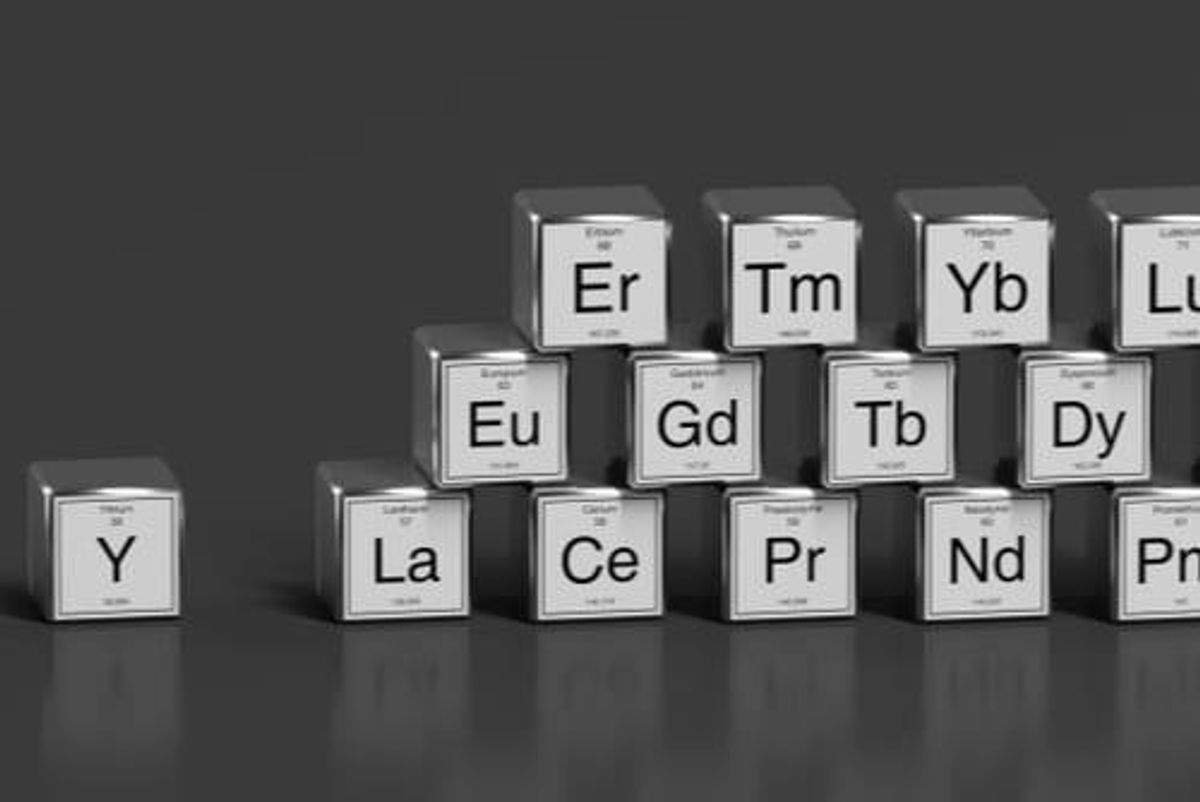Rare Earths Prices Show Signs of Recovery Following Tough Q1

Luisa Moreno of Tahuti Global doesn’t expect rare earths prices to fall in Q3 and Q4, but that depends on a number of factors.
The coronavirus pandemic hit commodities hard in the first quarter of the year, with rare earths prices under pressure as some mines and processing facilities were halted.
In China, the top-producing country, more than 50 percent of production was disrupted, Luisa Moreno, managing director at Tahuti Global, told the Investing News Network.
“Demand was weak because of downstream manufacturing closures, and overall distribution was disrupted by traveling restrictions,” she added.
During Q1, prices for some rare earth elements (REEs) were also affected, including cerium, lanthanum, neodymium and praseodymium, which saw 5 to 8 percent declines in Q2 compared to Q1.
“However, overall prices for most elements showed signs of recovery in June and July,” Moreno said. “I don’t think prices will fall in Q3 or Q4, but it depends if the virus is kept under control, the global economy stays open and a recession is avoided.”
She added that most production has returned and supply should stay uninterrupted if the virus stays under control in REE-producing regions.
“It seems that overall there have not been major concerns about supply, even once downstream manufacturing restarted,” she said. “It should be noted that end users (both defense and industrial) usually keep stockpiles of critical materials, which offers some cushion during supply chain delays.”
Rare earths are mined and extracted from ore together to produce a mixed chemical compound. China controls almost all mining and refining of heavy rare earths, which are usually found at lower concentrations and are used in more niche applications and at smaller amounts.
Speaking about whether the market will see more supply enter the space, Moreno said she doesn’t think there will be any significant new production in the near term, at least not in the next five years — but that may change after that point.
“If the financing and government support in the critical materials space stays healthy, in the longer term there is a chance that we may see new REE production and processing, for instance out of South American projects, like CBMM in Brazil, or from other by-product processing (like uranium or phosphate) projects,” she explained.
On the demand side, the rise of electric vehicles will be key for the REE space.
“There are expectations that as electric vehicle sales continue to rise at double digits every year, and if permanent magnet motors are widely adopted by automakers, then we will see coupled demand for neodymium and praseodymium (two important light elements), as well as dysprosium and terbium.”
Commenting on how to build supply chains outside of China, Moreno said the biggest challenge for most companies is metallurgy.
“To be able to develop an economic flowsheet at current prices means that most deposits (especially those with large percentages of low-price elements like lanthanum and cerium) need to keep processing costs below US$8 per kilogram. It has not been easy,” she said.
Looking ahead, investors who are following the REE space should keep an eye on several potential catalysts that could impact the future of the industry.
“The pulse of the global economy should give investors a sense of things to come. They need to pay attention to GDP growth, unemployment numbers, consumer spending, etc. The stock market seems to be disconnected from mainstream and perhaps betting on a fast economic recovery post-COVID-19.”
Of course, another development to monitor is the relationship between the US and China.
“If China implements any quotas on REE exports or tariffs on imports of unprocessed REEs from the US, we may see REE prices rise,” she said. “Of course, the outcome of the US election this November is also important for the future of US/China relations, I think.”
Moreno also mentioned the measures to contain the pandemic and a potential for a second wave of COVID-19 as factors to watch.
“If the supply chain stays mostly open — I mean refineries, metal and alloy makers, magnet makers, chemical processors, electronic component manufacturers, automotive manufacturers and so forth — we may see prices continue to rise and stabilize at a higher level,” she said.
“The situation may change if COVID-19 returns during the northern hemisphere winter, forcing governments to close businesses and restrict traveling.”
Don’t forget to follow us @INN_Resource for real-time news updates.
Securities Disclosure: I, Priscila Barrera, hold no direct investment interest in any company mentioned in this article.
Editorial Disclosure: The Investing News Network does not guarantee the accuracy or thoroughness of the information reported in the interviews it conducts. The opinions expressed in these interviews do not reflect the opinions of the Investing News Network and do not constitute investment advice. All readers are encouraged to perform their own due diligence.